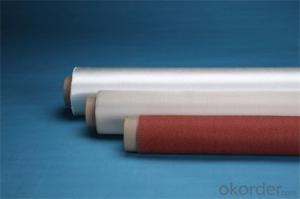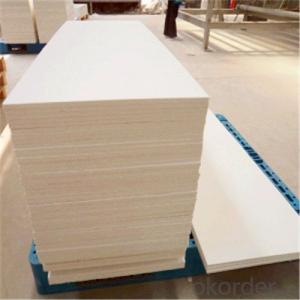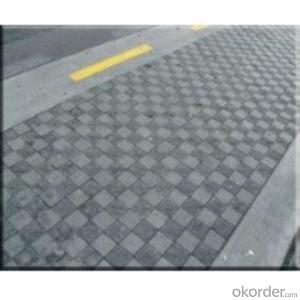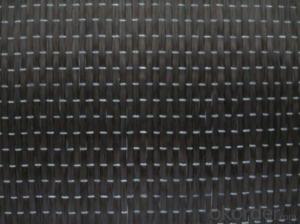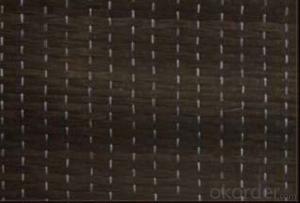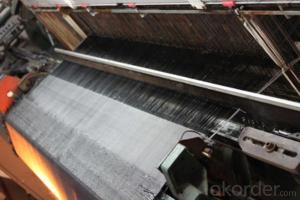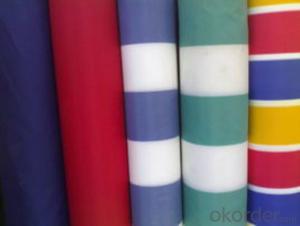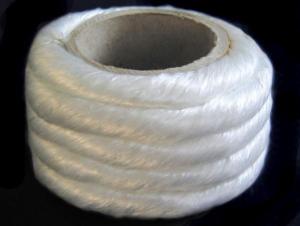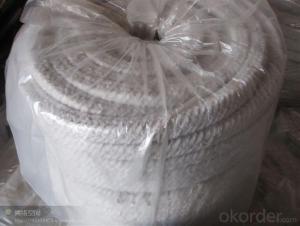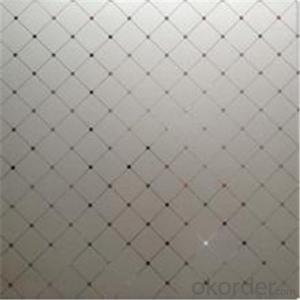Heat Insulation Fiberglass Cloth for 900C
- Loading Port:
- China main port
- Payment Terms:
- TT OR LC
- Min Order Qty:
- 1000 m
- Supply Capability:
- 100000 m/month
OKorder Service Pledge
OKorder Financial Service
You Might Also Like
Product Description
Silica fiberglass is inorganic fiber that contents more than 96% of SiO2, it's resistant to high temperature, soft point 1700°C, long term service temperature 900 °C, it can work 10 minites at 1450 °C and keeps good state at 1600 °C for 15 seconds. For it's properties of chemical stability, high temperature resistance and ablation resistance, it widely used in aviationand aerospace, metallurgy, chemical, building material and fire fighting industry, etc.
Our factory is the only one that specialized manufacture silica fiberglass in China and has the production line of the whole process from marble making, fiber forming, weaving, and finish. The strength of silica fiberglass made from Na2O-B2O3-SiO2 system glass is 3-5 times higher than that from E glass. The products sold to more than 20 provinces, cities, autonomous regions and exported to foreign countries.
Silica fiberglass products are available in forms of needled mat, fabric, scrim, staple yarn, chopped strand and cord, etc.
Product Properties
1> SiO2>=96%
2> soft point nearly 1700°C, long-time working at 900°C
3> low thermal conductivity
4> good chemical stability
5> good electrical insulation
6> low thermal shrinkage
7> Non-asbestos product without pollution
8> good process performance
Product Uses
High temperature resistant, insulation and sealing material
High temperature ablation resistant material
Fireproof material (for fireproof protective clothe, fireproof curtain, fire blanket)
Dust collecting in media of high temperature gas and filtration in media of high temperature liquid
Filter for molten metal
Distinguisher, insulation material, filtration of automobile and motorcycle
Protective material for welding
Electricity insulation material
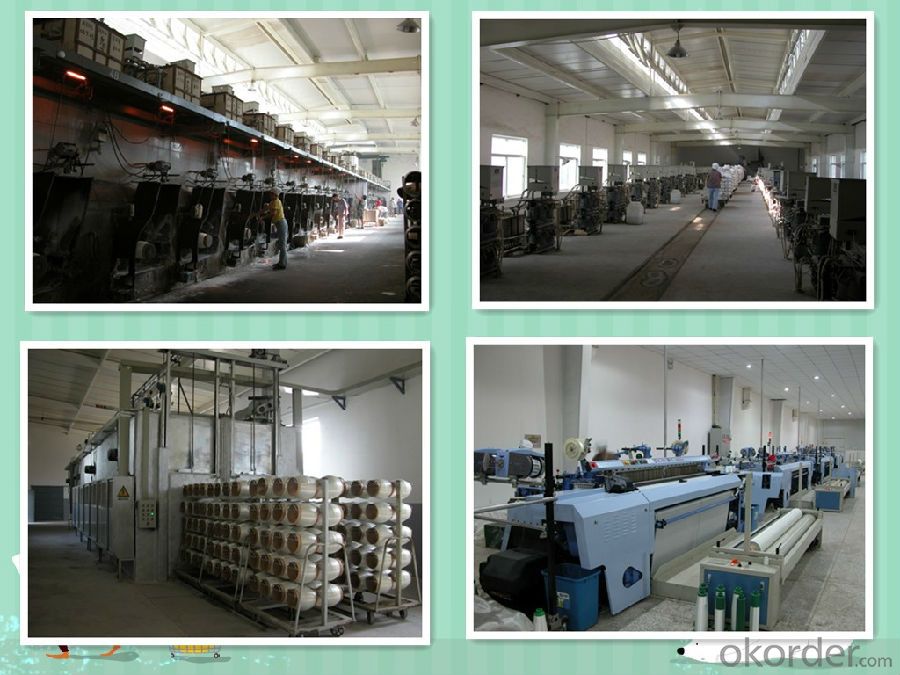
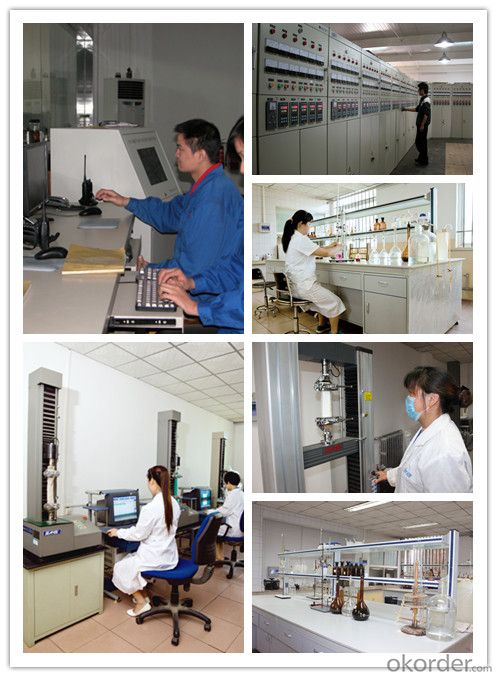
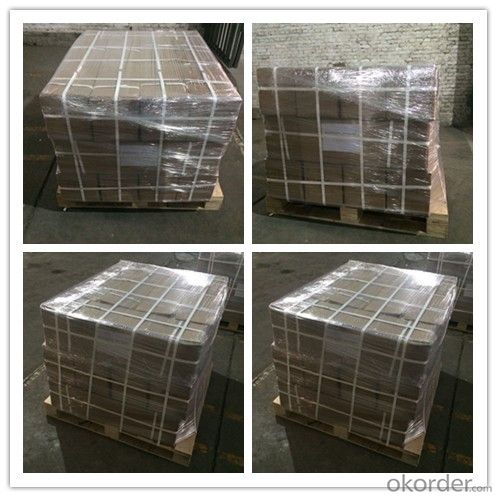
- Q:What are the different types of glass fibers used in textiles?
- Textiles commonly utilize multiple types of glass fibers, including E-glass, S-glass, C-glass, and A-glass. E-glass, also known as electrical glass, is widely utilized in textiles due to its exceptional electrical and chemical resistance properties, as well as its high strength-to-weight ratio. It finds applications in composites reinforcement, electrical cable insulation, and textile reinforcement for diverse purposes. S-glass, or structural glass, boasts a higher tensile strength and stiffness compared to E-glass. Consequently, it is prevalent in applications requiring superior mechanical strength, such as aerospace and military uses. S-glass fibers are frequently employed in the production of high-performance textiles like bulletproof vests, helmets, and protective gear. C-glass, or chemical glass, exhibits increased chemical resistance relative to E-glass. Its usage is common in situations involving exposure to harsh chemicals, such as manufacturing chemical-resistant gloves and aprons. A-glass, or alkali glass, demonstrates higher alkali resistance compared to E-glass. It is typically employed in applications that involve exposure to alkaline materials, like textiles used in the construction industry. Ultimately, the selection of glass fiber type hinges on the specific requirements of the application. Each type offers distinct properties and characteristics that render them suitable for a wide range of textile uses.
- Q:How are glass fiber textiles used in the energy sector?
- Glass fiber textiles find extensive application in the energy sector for various purposes. Wind turbine blades are one of the primary beneficiaries of these textiles. They are employed to reinforce the composite materials used in constructing the turbine blades, imparting strength and durability while simultaneously reducing their weight. The lightweight characteristic of glass fiber textiles enables the creation of larger and more efficient wind turbine blades, ultimately resulting in heightened energy production. Additionally, glass fiber textiles are utilized in insulating power plants and other energy facilities. Acting as excellent thermal insulators, they effectively minimize heat loss and enhance energy efficiency. These textiles can be woven or felted into insulation blankets, which are then employed to insulate power plant equipment such as pipes and boilers. By proficiently insulating these components, glass fiber textiles succeed in maintaining optimum system temperatures, reducing energy consumption, and increasing overall efficiency. Moreover, glass fiber textiles have a role to play in the construction of solar panels. They serve as backing material or substrate for photovoltaic cells, providing necessary support and stability. Furthermore, these textiles offer protection to the delicate solar cells against environmental factors like moisture and UV radiation. Owing to their remarkable strength and resistance to corrosion, glass fiber textiles are an ideal choice for this application. To conclude, the significance of glass fiber textiles in the energy sector cannot be overstated. Their usage in wind turbine blades, insulation, and solar panels effectively improves energy efficiency, boosts energy production, and enhances the overall performance of energy facilities.
- Q:How are glass fiber textiles used in the marine industry?
- Glass fiber textiles are widely used in the marine industry for various purposes. One of the main applications is in boat building and repair. Glass fiber fabrics, commonly known as fiberglass, are used to reinforce the hulls, decks, and other structural components of boats and yachts. These textiles provide strength and durability, making the vessels more resistant to impacts and wear. Moreover, glass fiber textiles are used in the production of composite materials used in marine applications. By impregnating the fabric with resin, it can be molded into different shapes and forms, allowing for the creation of lightweight yet strong components like hulls, masts, and rudders. This composite material offers high strength-to-weight ratio, corrosion resistance, and excellent fatigue properties, making it ideal for the demanding marine environment. Glass fiber textiles also find use in the production of marine insulation materials. These textiles are used to manufacture insulation blankets, wraps, and jackets that are used to protect various equipment and piping systems on ships and offshore platforms. The thermal insulation properties of glass fiber textiles help to prevent heat loss or gain, ensuring the efficient operation of the marine equipment. Furthermore, glass fiber textiles are employed in the manufacturing of marine upholstery and interior linings. Fabrics made from glass fibers are resistant to moisture, UV radiation, and chemicals, making them suitable for marine upholstery applications. These textiles can withstand the harsh marine conditions and provide comfort and durability to the interiors of boats and yachts. In summary, glass fiber textiles play a crucial role in the marine industry. They are used for reinforcing boat structures, creating composite materials, providing insulation, and enhancing the aesthetics of marine vessels. Their strength, durability, and resistance to various environmental factors make them essential components in the construction, repair, and maintenance of boats and yachts.
- Q:Can glass fiber textiles be used as soundproofing material?
- Yes, glass fiber textiles can be used as soundproofing material. Their composition and structure allow them to effectively absorb and dampen sound waves, reducing noise transmission and improving acoustics in various settings such as homes, offices, or recording studios.
- Q:Can glass fiber textiles be used in reinforcement of coatings?
- Yes, glass fiber textiles can be used in the reinforcement of coatings. Glass fiber textiles provide strength and durability to coatings, making them more resistant to cracks, abrasion, and impact. They can be used in various applications such as automotive, aerospace, marine, and construction industries to enhance the performance and longevity of coatings.
- Q:What is fiberglass cloth for?
- The external wall insulation mesh is based on alkali or alkali glass fiber yarn, woven glass fiber mesh to the substrate, and then a new alkali resistant products coated with acrylic copolymer solution after drying and is mainly used in cement, gypsum, walls, buildings and other structures in the outer surface enhanced crack.
- Q:Can glass fiber textiles be felted?
- Glass fiber textiles cannot be felted because they lack the necessary properties for the process. Felt is created through the matting, condensing, and pressing of fibers, commonly animal fibers like wool. These fibers possess interlocking scales that enable them to bind together when exposed to heat, moisture, and pressure. In contrast, glass fibers are produced by drawing molten glass into thin strands. Due to their distinct properties, glass fibers cannot undergo the felting process.
- Q:Mattress, bamboo fiber fabric and short plush fabric, that's always good
- In the summer, I think bamboo fiber fabric is good.The bamboo fiber mattress adopts natural bamboo fiber extracted from natural growth bamboo (i.e. bamboo fiber), and is made into a mattress made by the high-tech processing and according to the human sleep habit. Bamboo fiber mattress is superior to other fibers in antibacterial, deodorizing, anti mite, UV, pigmentation, anti elasticity, draping and abrasion resistance, and it is quick and breathable
- Q:Can glass fiber textiles be used in the production of curtains and blinds?
- Yes, glass fiber textiles can be used in the production of curtains and blinds. Glass fiber textiles are lightweight, durable, and have excellent heat and sound insulation properties, making them a suitable choice for curtains and blinds. They can also be woven into various patterns and designs, offering a wide range of options for aesthetic purposes. Additionally, glass fiber textiles are resistant to fading, moisture, and mildew, making them a practical and long-lasting choice for window treatments.
- Q:Can glass fiber textiles be used in window blinds?
- Yes, glass fiber textiles can be used in window blinds. Glass fiber textiles are known for their durability, strength, and resistance to heat and moisture, making them a suitable material for window blinds. They offer excellent light control and privacy while also being easy to clean and maintain. Additionally, glass fiber textiles can provide insulation and UV protection, making them a practical choice for window treatments.
1. Manufacturer Overview |
|
|---|---|
| Location | |
| Year Established | |
| Annual Output Value | |
| Main Markets | |
| Company Certifications | |
2. Manufacturer Certificates |
|
|---|---|
| a) Certification Name | |
| Range | |
| Reference | |
| Validity Period | |
3. Manufacturer Capability |
|
|---|---|
| a)Trade Capacity | |
| Nearest Port | |
| Export Percentage | |
| No.of Employees in Trade Department | |
| Language Spoken: | |
| b)Factory Information | |
| Factory Size: | |
| No. of Production Lines | |
| Contract Manufacturing | |
| Product Price Range | |
Send your message to us
Heat Insulation Fiberglass Cloth for 900C
- Loading Port:
- China main port
- Payment Terms:
- TT OR LC
- Min Order Qty:
- 1000 m
- Supply Capability:
- 100000 m/month
OKorder Service Pledge
OKorder Financial Service
Similar products
New products
Hot products
Hot Searches
Related keywords
